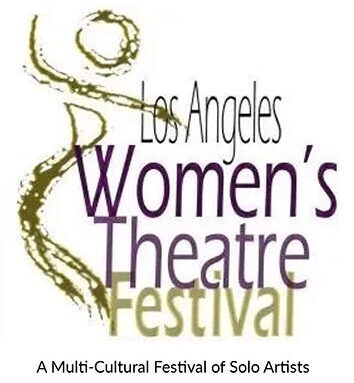

Meg Lin, writer/performer of “What Am I, Chopped Suey?” on the inspiration for her show and identity struggles.
Usually, women’s solo performance work is intentional and often passionate. In speaking with Meg Lin, I wondered what incident, experience, or insight inspired her to create her show.
“The biggest influence in my life was my mom who struggled with paranoid schizophrenia. I grew up in a traditional Chinese-American family in the ‘80s and ‘90s when mental wellness was not talked about. There weren’t many resources back then, but a lot of public shame and unknowns. I struggled with trying to hide the trauma and yet survive and understand what was happening to my family. Why me?
“In the midst of it all, I was growing up not being white in America. I was raised in a Los Angeles suburb and a lot of people would think, ‘Oh, then you fit in.’
Compared to other parts of the country, I definitely had some benefits, and my experience probably could have been worse. But I thought my life was hell.
“As a young Chinese-American girl, I wrestled with my identity. My immigrant parents didn’t have any of the experiences of what it’s like to grow up in America as a child or teenager. I hated myself, how I looked, who I was, my family, and being Chinese. I wished that I was white.”
I noticed that Meg frequently used mental “wellness” instead of mental illness.
She explained, “The first time I heard the term ‘mental wellness’ instead of ‘mental illness’ was when Sharon Feldstein (Jonah Hill and Beanie Feldstein’s Mom) and Patsy Noah (Adam Levine’s Mom) spoke at an event a few years ago about their non-profit organization, Your Mom Cares.
“Language is evolving. When we still talk about it as an illness, there’s a subliminal message that something’s ‘wrong with you,’ when actually, it’s about our overall health. Our mental well-being is just as important as our physical well-being. We can need help and it’s OK. It’s OK to ask for help, it’s OK to acknowledge it and there are a lot more resources out there.”
I asked Meg what it means to be a woman.
“I grew up as a tomboy. I didn’t like wearing dresses and didn’t want to play with Barbie dolls let alone any type of girly thing. I preferred playing sports and hanging out with boys. In college, most of my friends ended up being women but in my childhood and teenage years, I was a fish out of water. I didn’t even wear any makeup until my 40s.” She laughed, adding, “And that was only because I started pursuing acting!
“What does it mean to be a woman now? Honestly, I’m still learning myself. I’m learning to celebrate instead of hiding or feeling ashamed.”
I wondered what is something most people don’t know about Meg.
“I hid my love for creativity. As a little girl, I dreamt secretly about being an artist. I wished I could draw, be a storyteller, a singer, or a musician and move people through music, and I also liked acting and performing. I grew up watching musicals. The first one my dad took me to was Annie onstage at the Pantages Theatre. Seeing other little girls up there on stage, I realized, ‘I want to be there!’
“But I wasn’t a stereotypical extraverted theatre kid. I did two or three K-12 short performances and that was it. I became an elementary school teacher and eventually a principal.
“People are used to me giving public, formal speeches, but not this type of personal, vulnerable show. Most people would be shocked that I’m a performer. I got a life coach before quitting my job cold five years ago. The coach brought out my secret love of the entertainment industry.
“I cry at everything – I’m very emotional – and I wanted to take part in telling stories. I saw a lot of stereotypes out there and wondered how I can change the stories and the faces. I want to share so other little girls won’t have to struggle the way I did. Now I’m pursuing both acting and writing.”
To read more about Meg click here.
